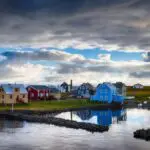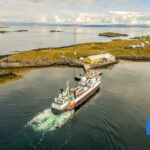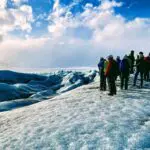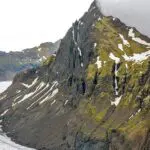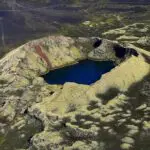Unlike naval battles around Iceland during WWII, few, if any, Icelanders died in air crashes in Iceland during the same period. From 1940 to 1945, more than 300 plane crashes and mishaps were recorded in and around Iceland. They ranged from minor accidents to fatal crashes.
The military bases in Iceland were accompanied by significant air traffic because air warfare played an important role in the Second World War conflicts. As a result, plane crashes were quite common in this country. They primarily involved British and American military aircraft and the occasional airplanes from the German air fleet.
215 Allied aircraft were destroyed or damaged, and 386 people were killed. Approximately 50 German military pilots were killed in Iceland during the same period. Planes sometimes disappeared on their way to and from Iceland, most likely crashing into the sea. Weather conditions and equipment failure are the most common causes of severe air accidents.
Hot Stuff Crashes into Fagradalsfjall
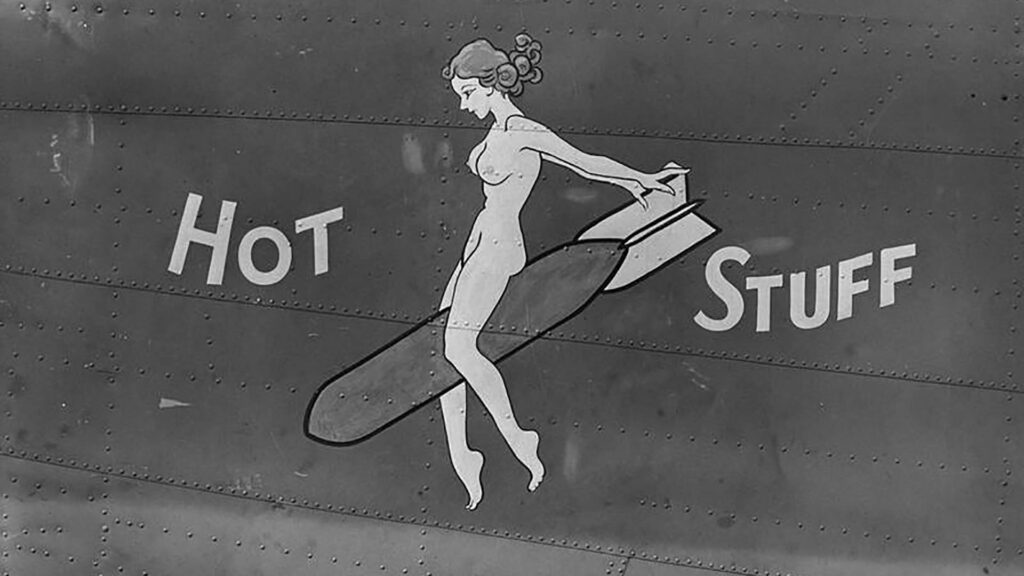
On May 3, 1943, the bomber B-24D Liberator 41-23728, nicknamed Hot Stuff, went down in one of the most tragic air accidents here. 14 people died in the accident, but sniper Georg A. Eisel survived with only minor injuries. The plane had attempted to land at Keflavík Airport but failed due to the weather. It was possibly on its way to Kaldaðarnes or Reykjavík. General Frank Maxwell Andrews, the Commanding General of US Forces in the European Theater of Operations at the time, was among the passengers.
Until Andrew’s death, no high-ranking Allied officer had been killed in the war. If Andrews had not died on Mount Fagradal, he would have most likely led the American forces in the Normandy invasion instead of Dwight D. Eisenhower, who would later become President of the United States.
Because of the high level of air traffic at Reykjavik Airport, several plane crashes occurred near the city. A complete wreck of a Northrop N-3PB aircraft was discovered by chance in Fossvogur off Kársnes in 2002. Because the plane’s cargo was unknown, a diving ban was imposed within a 20-meter radius of the wreckage. This kind of plane could transport up to 900 kg of bombs. Thus it was unclear whether moving them would be safe. Furthermore, whether the plane’s crew escaped before it sank was unknown, raising the possibility that it was a wet grave.
It is more likely that it is a plane that sank after landing on October 22, 1942, but all three crew members survived. The machine is hoped to be recovered from the seabed, but only 24 of this type were produced. Only one of them has survived.
Fagradalsfjall’s Eruption
Hot Stuff crashed just about where the famous Fagradalsfjall’s Eruption was in 2021 and 2022. Your Friend in Reykjavik went to the eruption site, live-streamed it, and visited the crash site as well. Check it out here.
9 Nazi Aircrafts Crashed in Iceland
On the night of May 22, 1941, the people in the East Fjords heard a large explosion. A German spy plane had crashed into the mountain Krossanesfjall.
One of the significant events of the Second World War occurred in the spring of 1941. The German warships Bismarck and Prinz Eugen sailed from Gotenhafen on the Baltic Sea on May 19, en route to the Atlantic Ocean, with a stop at Björgvin in Norway. After taking oil there, it was launched from the coast of Norway on May 21 at 19:30.
The planned route of the ships was deep east of Iceland and north of the country and then along the ice strip to the south of the Greenland Sea. It was known that the Germans did not want to get into a battle with the main British fleet. So their planes, which were based at Norwegian airfields, had been on reconnaissance flights to the headquarters of the British fleet in Scapa Bay in the Orkney Islands. That had been somewhat successful.
Hitler Didn’t Like His Battleships out at Sea
Most of the largest British warships were still at their headquarters in Scapa Flow when the German warships set sail from the Norwegian coast. The British knew what was going on. It wasn’t until the fourth day after the German warships left Gotenhafen that the German naval command informed Hitler about the ships’ expedition. They could barely get the chancellor to agree to continue this expedition.
It was known that Hitler didn’t like his warships out at sea, and some said he couldn’t sleep those nights. The battleship Bismarck was on its first voyage out into the Atlantic, and this trip was the ship’s last. It was sunk by British warships a few days later, which we told you about in our previous post on naval battles around Iceland.
Heinkel He 111 crashes in the East Fjords
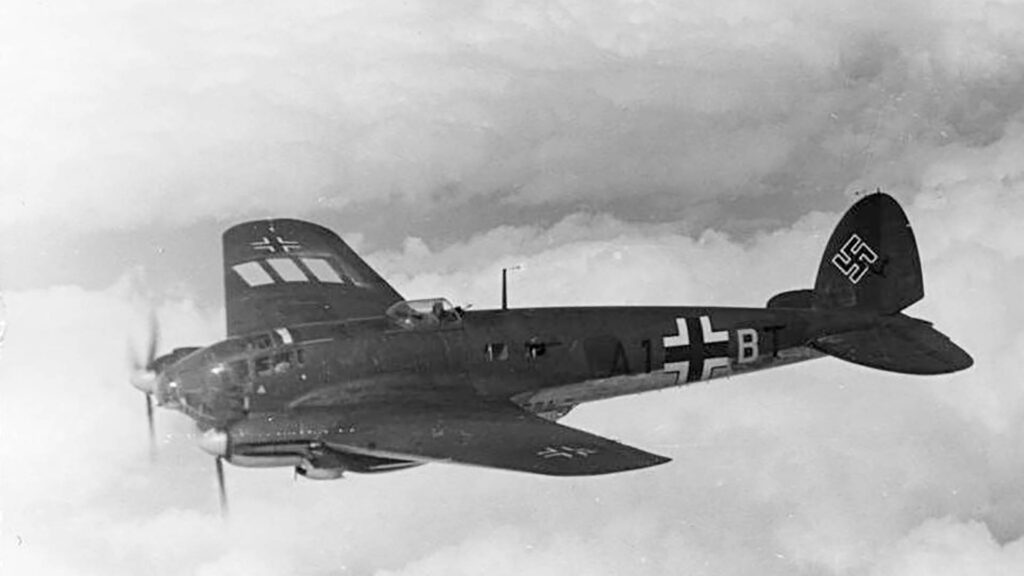
On the evening of May 21, a Heinkel plane of the German Air Force left Norway for an armed reconnaissance flight bound for Iceland. It would have to fly almost 700 nautical miles to the Icelandic East Fjords, so the flight time must have been nearly four hours.
There was little wind at the altitude chosen. But it is not certain that the plane went directly to Iceland. The Heinkel He 111 H-5 aircraft left Norway several hours earlier than planned. It was supposed to explore the area from the Hebrides to Iceland. The planes of the KG 40 squadron usually went on their reconnaissance flights at midnight and returned at noon the next day. The planes were probably the four-engine Kondor planes often seen in Iceland during those years.
The departure time of the Heinkel plane supports the fact that it was supposed to explore the area around Iceland in the vicinity of Seyðisfjörður due to the passage of German warships. All the records of the KG 40 squadron are lost.
The aircraft’s callsigns were F8+GM. It probably took off from Gardermoen Airport north of Oslo. If so, the pilots likely landed at Sola Airport near Stavanger to refuel.
The Heinkel Arrives in Foggy Weather
The Heinkel plane arrived in the East Fjords during the night of May 22 at around two, in foggy weather.
British soldiers on guard at Vattarnes heard a plane at about 2:00 AM, which flew in a northerly direction. About ten minutes later, they heard a massive explosion. Icelanders in the area later recalled seeing the plane circling around for a short time, looking for a good place to land. But then the plane flew to sea. A short while later, the explosion was heard, and fire lit up the sky. A second explosion occurred about two minutes later, which seemed to be below sea level. After the first explosion, the plane’s engine was not heard.
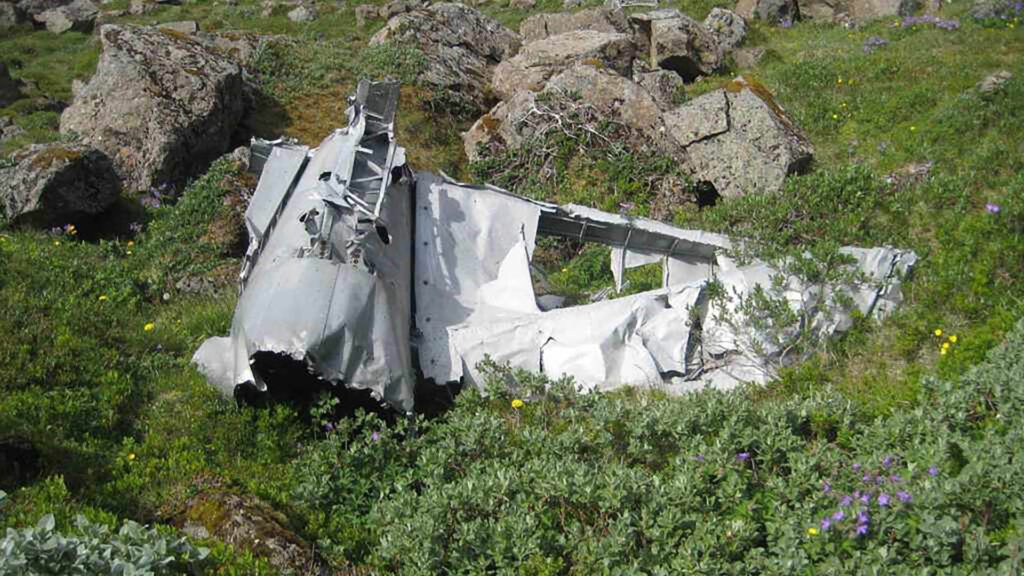
That night, the motorboat Friðþjófur SU 371 from Eskifjörður was arriving after fishing. The person in the boat’s wheelhouse heard a plane crash but did not see it. The crew then heard a massive explosion and saw a flash of fire toward Krossanesfjall Mountain. Four young Germans died there.
A few days after the accident, the farmer in Krossanes found the plane’s wreckage and alerted the sheriff, who went to the place with British soldiers and farmers from the countryside. One giant, unexploded bomb was found at the site.
What was the Mission?
The Heinkel plane’s mission to Iceland that night likely was to find out if the British fleet was in those areas and where. Around the time the aircraft flew into the mountainside at Reyðarfjörður, the German warships were at full speed east of Iceland. A guidebook found at the crash site contained information for the pilots about wavelengths at various airports in Germany, Czechoslovakia, and France and several airports in Norway. In this book, it was stated that the previous week the plane had flown along the coast of Norway. They had flown to Iceland once, but it was not said when. The cause of the Heinkel flying into the mountainside is unclear.
However, they were certainly flying in the clouds. Since the farmer at Krossanes thought he had seen the aircraft, it is possible the pilots were trying to find their way, which is challenging in foggy weather. Additionally, they didn’t know the course of the land. Even though the night is pretty bright at that time of year, 2:00 AM is the darkest portion of the night.
The First and Last Recorded WWII Air Crashes in Iceland
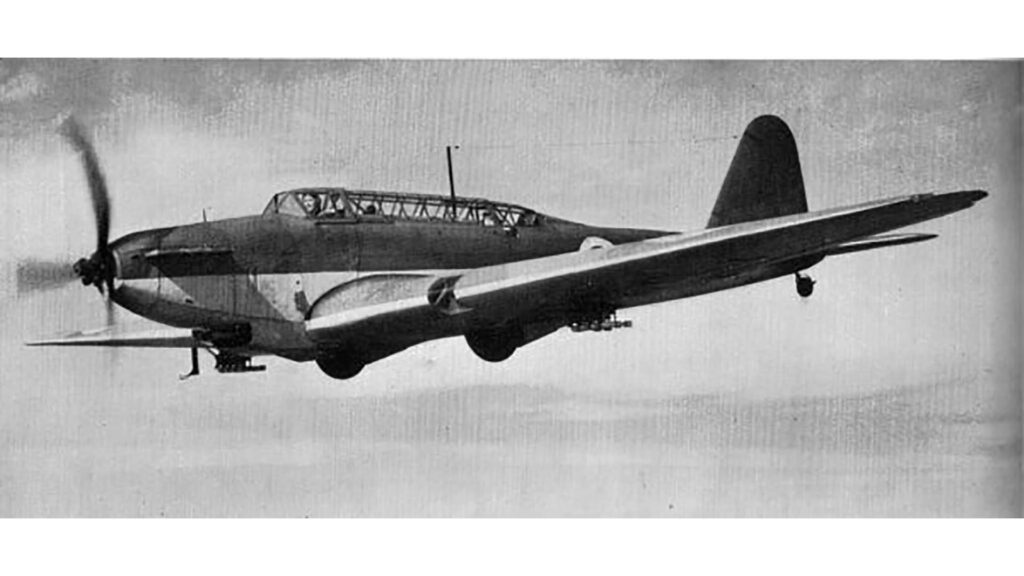
Iceland’s first recorded air crash during WWII was on September 13, 1940. Thankfully no one died. The Fairey Battle L5343 was on a passenger transport from Kaldaðarnes to Melgerðismelar in Eyjafjörður. After about an hour of flight, the weather worsened.
When the pilot turned back in the hope of better weather, the plane’s engine failed. He had to do an emergency landing on a glacier ridge south of Hofsjökull Glacier. The pilot and passenger escaped with minor injuries; pilot Wilcox had turned on his ankle. They headed south on foot and walked about 70 km in two days. Finally, they approached a group of farmers who took them on horseback to the next town.
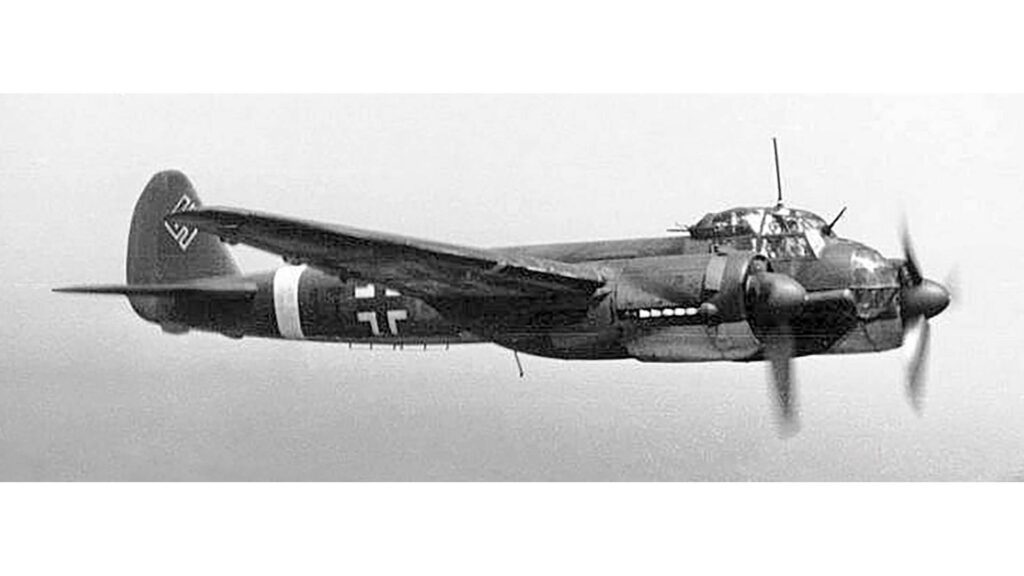
The last accident was when Junkers JU 88 A-6U was on a survey and weather observation trip north of Iceland on May 2, 1945. The oil pressure fell on the right wing of the engine, and it overheated. The pilot released extra fuel tanks and decided to land the plane on the sea approximately 100 m from land. About 2 km north of the town of Leirhöfn. The crew escaped but remained as prisoners of war in America and England until 1948.
Sources: Vísindavefurinn and World War II Crash Sites in Iceland

